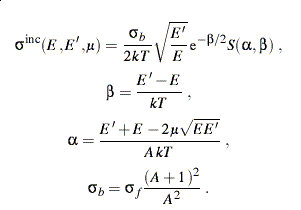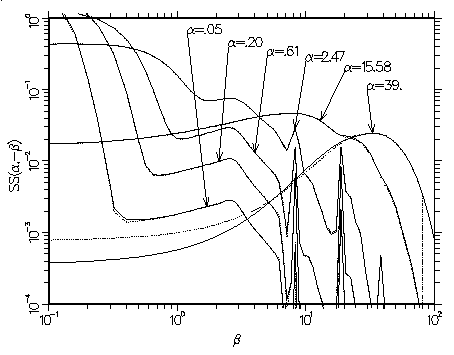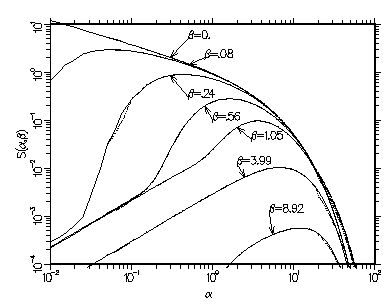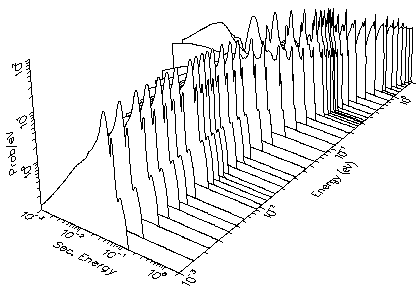
Here σb is the bound scattering cross section, σf is the free scattering cross section, E and E' are initial and final neutron energies, μ is the scattering cosine, and A is the ratio of the target mass to the neutron mass.
The scattering function for a gas of particles with no internal structure (free gas) is given by

A bound scattering function is considerably more complex, as shown by the following two figures for hydrogen bound in water:


The sharp features in the first figure are due to the discrete molecular vibrations at .205 and .408 eV. The peak that develops at small alpha and beta is a pseudo-elastic peak resulting from diffusion. For more information on the physics going on in these figures, see the LEAPR write up.
THERMR processes the scattering function into an incoherent-inelastic cross section vs energy and a normalized energy-angle distribution. An example of such a distribution is shown below for beryllium. A number of "up-scatter" peaks corresponding to the deexitation of lattice vibrations are seen for low incident energies.
